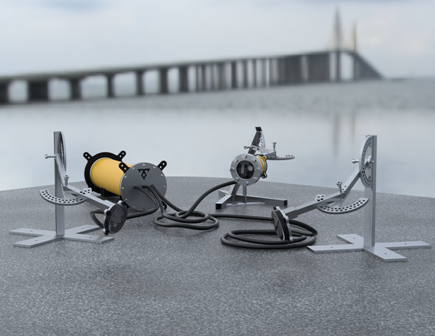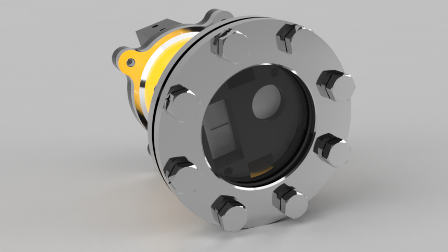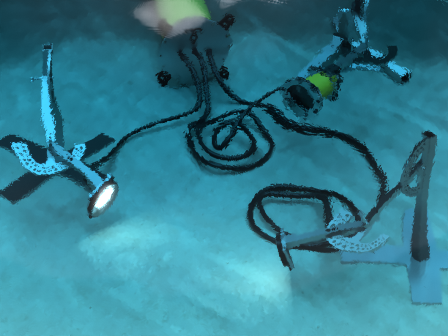Polish know-how has potential
To capture life in the freezing, dark ocean deep for an extended period of time one can use a photo camera. Although an underwater video camera is even better.
The crew of a Polish innovative company TechOcean was inspired to create such an invention by the scientists with the Institute of Oceanology of the Polish Academy of Sciences (PAS). The researchers sought an external contractor that would take up the challenge of such a demanding commission as a specialized underwater video camera after several of their earlier attempts to contract a vendor had failed. In early November 2015 the scientists contacted the TechOcean team. „We knew that there is adequate know-how and potential in Poland,” said Piotr Bałazy, PhD, with the Institute of Oceanology PAS. The researchers learned about the startup from the success of the Project ERIS in the Black Sea ROV Challenge – a competition for underwater robots.
TechOcean takes up the gauntlet
„Scientists with the IoO PAS proposed that we design a special purpose equipment: a video camera that would be submerged in the icy waters of the Spitzbergen, at the depth of several dozen meters,” says Błażej Żyliński, co-founder of TechOcean, a graduate of Aviation and Aerospace Engineering at the Faculty of Power and Aeronautical Engineering of the Warsaw University of Technology.
The device was to enable documentation of the life of benthic organisms in the form of not only photography, but also videos. The scientists with the IoO PAS wanted a small, and relatively inexpensive apparatus, to have it replicated at an affordable price, and thus collect a substantial volume of research material.
In the first stage of their work, TechOcean team collected exact information on the video camera’s target environment, the necessary settings options and other requirements for the device. After discussing the details with scientists, the specialists went to work.

Tough nut? They will crack it!
„The construction of the device needed to answer to a number of problems. The video camera was to be an autonomous device, able to spend one year in freezing saline, with no check-up or maintenance,” says Wiktor Krzeszewski, the other co-owner of the task force Warsaw startup.
The first challenge was a strong enough power source. “Ultimately, we used a specialized battery, which is ten times more capacious than the car battery, despite its small size,” says Blazej Żyliński. Another problem was the issue of water-tightness of the device and its resistance to the aggressive influence of sea water pressure for a long time. „To create the housing, we used surgical steel. We covered it also with an additional layer of paint that is used to protect the sides of ships,” explain engineers with TechOcean.
In the case of the viewfinder, their choice was not a polymer, but glass, 1 cm thick, which is used in blast furnaces. „Now the viewfinder is not only able to withstand the ocean pressure at a depth of approx. 100 m, but is also resistant to scratches,” points out Żyliński.
The third technological challenge was the design of the video camera itself, namely saving the collected data – photos and videos – for a whole year. „We tested the maximum capacity of numerous SD cards available on the market today. However, it turned out that in the case of such a large amount of data, the advertising claims of the manufacturers of SD cards concerning their capacity do not always coincide with reality. Thus, at that stage we were challenged with saving large photo and video files, but finally managed to solve this problem,” say engineers with TechOcean.
The end crowns the work
Eventually system, named UC01, consisted of three modules: camera, light source and battery power, connected by cables. The camera and light are mounted on stands embedded in the ocean ground, with a wide range of manipulation. The unit starts up automatically at specified intervals.
The working prototype was created within approx. four months, and a complete device was ready half a month later. How is it possible? „We use a network of reliable suppliers and contractors that we have built over the last four or five years, e.g. in Mars rovers competitions. Secondly, we solve problems in real time, contact decision makers directly, and we know how to talk to subcontractors. In short, we use a scheme that is well-known and proven,” explains Żyliński.
The camera is TechOcean’s first project prepared entirely by external guidelines. It can be easily called a niche, special-purpose solution. The device can operate in sea water for a year, without any maintenance, at temperatures up to -5 degrees Celsius and a depth of up to 100 m. „Currently there is no other system available on the market that can operate autonomously for so long under water,” concludes Krzeszewski.


TechOcean is gaining pace
At the turn of November and December 2016, TechOcean’s representative, Michał Kacperczyk presented the underwater camera in Sweden. He and nine other representatives of Polish startups represented the country during a trade mission led by the President of Poland, Andrzej Duda.
But UC01 is not the only innovative solution by TechOcean. One other is a remote-controlled underwater drone, equipped with a full HD camera and a gripper. The device is perfect for inspecting pipelines, wrecks and other underwater objects.
Another innovative product under the TechOcean brand is a system to measure ocean currents. It is dedicated for high performance sailing and was tested during the Olympic competition Rio de Janeiro by the national team of Norway.
Apart from specialized equipment, TechOcean engineers popularize robotics. They created a system for aspiring robot designers to build their own machine. It is called the Internet of Robots. The project won second prize in the competition Robot Launch 2016 organized by the Silicon Valley Robotica, a group bringing together the key people involved in robotics, and the famous Silicon Valley robotics portal, Robohub.
According to Piotr Bałazy, TechOcean team have a promising future, as in Poland companies offering specific solutions, such as custom-made underwater camera, are hard to come by. „One can surely seek potential buyers for this solution on international markets,” concludes the researcher.


